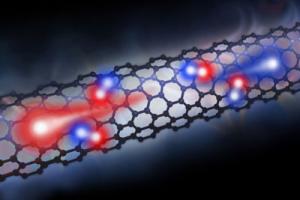Researchers create highly sensitive nanomechanical resonators from Graphene
Researchers at Columbia University in New York have made the first electrical-readout nanomechanical resonators made from graphene. The devices, which consist of vibrating sheets of graphene suspended over micron-sized trenches, could be used as highly sensitive, robust, mass detectors.
The researchers has made the graphene into a bridge-like resonators that vibrate at very high frequencies. The frequency changes each time a molecule is absorbed onto its surface.
